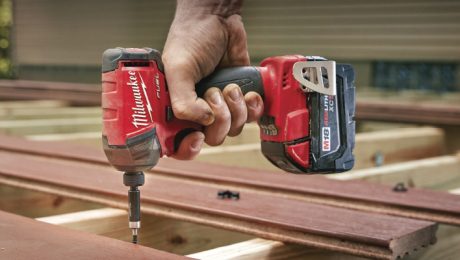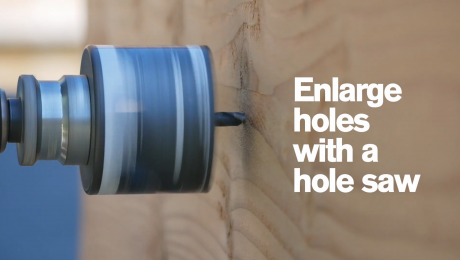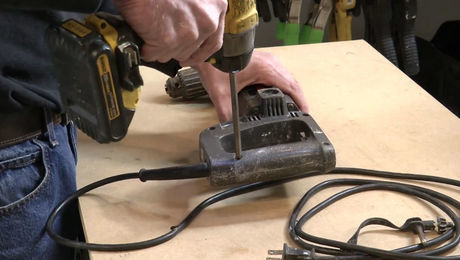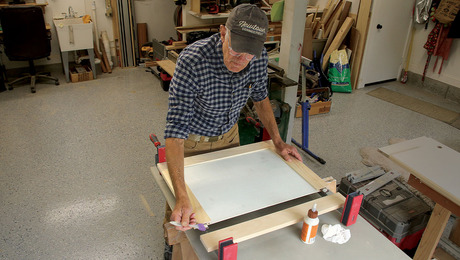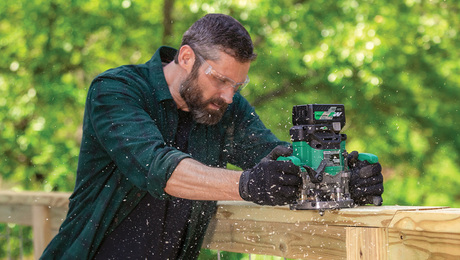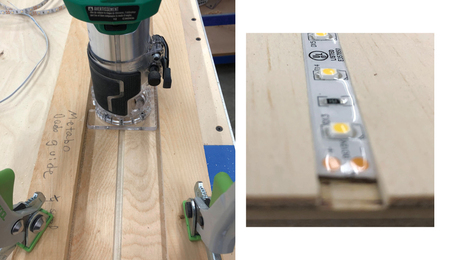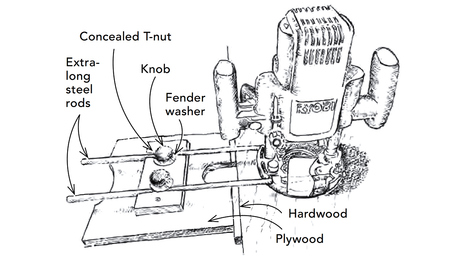Scribing Rails to a Round Column
Carpenter Maria Klemperer-Johnson shows how to make a router jig to create a smooth transition for this tricky porch-railing connection.

Synopsis: Carpenter and residential-construction instructor Maria Klemperer-Johnson describes a recent project that involved building a porch stair railing that would intersect with a round column. In order to form a smooth connection, she created a jig to cut the curve on the railing stock by copying the curve of the column onto a piece of plywood and then setting it at an angle equal to the pitch of the stair. With detailed drawings and step-by-step photos of building and using the jig, the article describes the process of routing the curve in the railing stock in a series of passes and then pocket-screwing the railing stock to the column.
When I was approached to rebuild a porch in the Fall Creek neighborhood of Ithaca, N.Y., I knew it would be a rewarding project. The clients—both landscape architects—care about aesthetics and construction details. Their porch was barely hanging on, but its original character was visible beneath the peeling paint and rotting boards.
The most gratifying part of the project was designing and building the railing—the original was undersize both in terms of code and appearance, and the connections to the columns were a cobbled mess of rusty toe screws and brackets. The challenge lay with cleanly attaching the railings—particularly the sloped stair rails—to three tapered round columns.
I’ve seen myriad awkward solutions to this tricky detail. Sometimes the column is “flattened” with an applied block; other times handrails are hung off brackets on the side of the column, or they land on an extra newel post. I wanted a more elegant connection, so I built a jig that allowed me to cut the curve of the column on the sloped handrail. I started by making a radial template sized for the diameter of the columns— this took care of the level railings. Then I built a scaffold to hold that template at the slope of the stair. It turned out to be a lot of work—work I didn’t anticipate when bidding the job. But the fun of solving a challenging carpentry problem made it worthwhile.
Build a sloped radial jig
Even a steady hand won’t produce curves clean enough for such a visible location as a stair rail. Instead, I built a router jig, which allowed me to get accurate, smooth, repeatable results. The radius of the cutout in the sloped top piece matches the radius of the column—by setting that piece on an angle matching the stair pitch, that radius is elongated, creating a perfect connection from sloped rail to plumb column.
More about rails and scribing:
Setting Railings – An inside look at cutting and screwing railings before baluster installation.
Scribing Made Simple – Learn and practice the basic techniques, then move up to the more difficult versions.
Flawless Two-Piece Baseboard – If you dial in your measurements and fine-tune your cuts, you won’t need the painter to make your work look good.
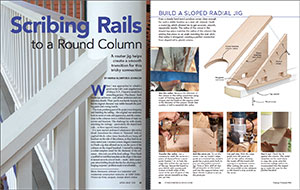
From FineHomebuilding #290
To view the entire article, please click the View PDF button below.










